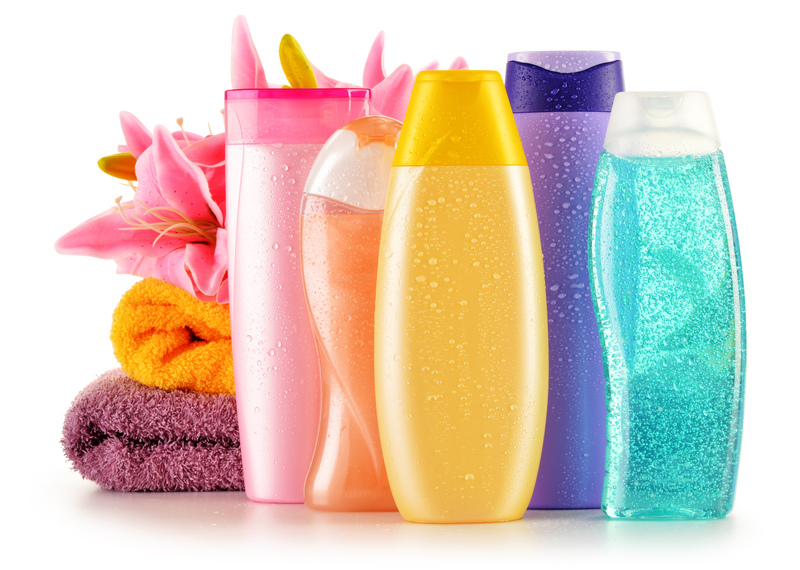DIY Guide to Sparkling Clean Curtains
Posted on 06/06/2025
DIY Guide to Sparkling Clean Curtains
Curtains are more than just window dressings--they're an essential element of your home's ambiance and a frontline defense against dust, pollen, and everyday grime. However, over time, even the highest-quality drapes can lose their luster, accumulating unwanted dirt and odor. If you want to revitalize your living spaces and safeguard your family's health, keeping your curtains sparkling clean is a must. In this DIY guide to sparkling clean curtains, you'll discover easy, effective, and eco-friendly techniques to wash, refresh, and maintain your drapery like a pro.
Why Should You Clean Your Curtains Regularly?
Curtains can act as dust and allergen magnets. Over time, these pollutants can lead to health concerns, faded fabrics, and unpleasant odors. Here are some compelling reasons to prioritize curtain cleaning:
- Improve Indoor Air Quality: Curtains trap airborne particles, pet dander, and even mold spores, which can be harmful if left unchecked.
- Extend Curtain Lifespan: Regular cleaning prevents fabric degradation and color fading, keeping your drapes looking newer for longer.
- Enhance Home Aesthetics: Clean, fresh curtains instantly brighten any room and elevate your home's appearance.
- Eliminate Odors: Curtains absorb odors from cooking, pets, and smoking, but thorough cleaning keeps your home smelling great.
How Often Should You Clean Curtains?
While it's easy to overlook this chore, following a routine can make a huge difference. As a rule of thumb:
- Light dusting or vacuuming: Every 2 weeks
- Deep cleaning or washing: Every 3-6 months
- Immediate attention: Spot clean stains and spills as soon as possible
High-traffic or allergy-prone homes may benefit from even more frequent cleanings.

Essential Supplies for a DIY Curtain Cleaning
- Vacuum cleaner with upholstery attachment
- Lint roller or soft brush
- Microfiber cloths
- Mild detergent or curtain-friendly cleaner
- White vinegar (for natural cleaning)
- Baking soda (for tough odors)
- Spray bottle (for homemade cleaners)
- Access to a washing machine (if applicable)
- Steamer (optional, for delicate fabrics)
- Step ladder
Step-by-Step DIY Guide to Sparkling Clean Curtains
1. Read the Manufacturer's Label
Before undertaking any curtain cleaning project, always check the care label. It will tell you if your curtains require dry cleaning, machine washing, or are safe for hand washing. Ignoring these instructions can damage fabrics, shrink drapes, or fade colors.
2. Remove Dust and Loose Debris
Start with a thorough weekly routine to minimize buildup:
- Take curtains down if you plan a deep clean; otherwise, leave them hanging for vacuuming.
- Use a vacuum cleaner fitted with an upholstery brush attachment or a lint roller to gently remove dust, pet hair, and spider webs.
- Pay special attention to pleats, hems, and the tops where dust accumulates.
3. Spot Cleaning Stains
Dealing with a stubborn mark? Don't panic. Here's a safe spot-cleaning routine for most curtains:
- Mix a solution: Combine a small amount of mild detergent with lukewarm water, or use a solution of equal parts white vinegar and water for a natural alternative.
- Test first: Blot a hidden section to check colorfastness.
- Blot, don't rub: Use a clean microfiber cloth or sponge to dab at the stain. Rubbing can spread the stain or damage the fibers.
- Repeat if necessary: For tough marks, try a paste of baking soda and water. Allow it to sit for 10-15 minutes before wiping clean.
4. Deep Cleaning: Washing Curtains at Home
Hand Washing Curtains
- Fill your bathtub (or a large basin) with lukewarm water and a gentle detergent.
- Gently swish the curtains to dislodge dirt, taking care not to twist or wring delicate fabrics.
- Rinse thoroughly with fresh water to remove any soap residue.
- Squeeze out excess water with care and hang to dry.
Machine Washing Curtains
- Use a delicate or gentle cycle with cold water and a curtain-safe detergent.
- Remove hooks and rings before washing to avoid tearing the fabric.
- Consider washing a test panel first to monitor results.
Pro Tip: For lace, sheer, or delicate curtains, use a mesh laundry bag or pillowcase for added protection.
5. Drying Your Curtains
- Air drying: The safest method is to hang your curtains outdoors or in a well-ventilated area. Straighten and smooth out pleats with your hands while still damp to prevent wrinkles.
- Tumble drying: Only if the care label permits. Always opt for a low-heat, gentle setting.
- Never use high heat: Excessive heat can damage and shrink curtain fabrics.
6. Ironing and Steaming for That Sparkling Finish
To achieve truly sparkling clean curtains, remove any lingering creases:
- Iron as recommended on the fabric care label, generally on a low-heat setting.
- Use a handheld garment steamer for stubborn wrinkles and to gently sanitize fabrics.
- Hang curtains while slightly damp; gravity will help remove creases naturally.
7. Rehanging and Final Touches
- Carefully replace curtain rings or hooks.
- Rehang your curtains immaculately for a fresh new look.
- Check for lingering stains or spots and repeat spot cleaning if necessary.
Natural Curtain Cleaning Solutions
If you prefer to avoid harsh chemicals, these natural cleaning solutions are effective and safe for most curtain types:
- White vinegar: Removes odors and helps lift stains.
- Baking soda: Neutralizes persistent smells and acts as a gentle scrub.
- Lemon juice: Brightens whites and adds a fresh scent.
- Cornstarch: Acts as a natural dry cleaner for oily stains (sprinkle, let sit, then brush off).
Special Curtain Fabrics: What to Know
- Velvet: Brush gently; avoid water. Steaming is often safest.
- Silk: Usually requires professional dry cleaning.
- Lace and sheers: Hand wash with utmost care or use a mesh bag in the machine.
- Blackout curtains: Wipe with a damp cloth; avoid prolonged soaking or machine washing unless specified.
Mold, Mildew, and Curtain Odors: The Ultimate Solutions
Damp, musty odors or visible mold can develop in humid climates or poorly ventilated rooms. Here's how to banish them:
- Pre-treat with vinegar: Spray white vinegar on affected areas and allow to sit for 30 minutes.
- Wash as above: Use the hand or machine washing method depending on fabric type.
- Sun-dry when possible: Sunlight acts as a natural deodorizer and mold deterrent.
- Baking soda boost: Add 1/2 cup of baking soda during washing for stubborn odors.
Never store damp curtains; always ensure they're completely dry before rehanging.
Tips for Everyday Curtain Care
Sparkling curtains aren't just about deep cleaning; regular upkeep goes a long way! Practice these habits:
- Vacuum curtains regularly to prevent dust accumulation.
- Shake them out when opening windows to dislodge loose debris.
- Rotate draw curtains to prevent sun fading in one area.
- Use tiebacks to avoid contact with furniture and sticky fingers.
- Prevent mold by keeping your house well-ventilated.

Frequently Asked Questions about DIY Curtain Cleaning
- Can I machine wash all my curtains?
No--always check the label. Delicate, lined, or specialty fabrics may require hand washing or professional cleaning. - How can I keep my curtains clean longer?
Regular vacuuming, prompt spot cleaning, and keeping windows shut on windy days will help extend the cleanliness of your drapes. - What about roman blinds or vertical blinds?
Many of the same principles apply! Vacuum and spot clean as needed. Fabric blinds may be machine or hand washable, but check manufacturer guidelines. - Can I use fabric softener on curtains?
It's usually not recommended, as it can leave residue or attract dust. A small amount of white vinegar in the rinse cycle works as a natural softener and deodorizer!
Conclusion: Enjoy the Beauty of Sparkling Clean Curtains
With this comprehensive DIY guide to sparkling clean curtains, you're equipped to revitalize your drapes and transform your home. Proper curtain cleaning isn't just a matter of aesthetics--it's an investment in your family's health and the longevity of your textiles. Whether you favor machine washing, hand washing, or natural cleaning methods, regular maintenance keeps your curtains looking fresh, hygienic, and beautiful year-round.
Make curtain cleaning a habit, and you'll always enjoy the soft light, vibrant colors, and luxurious feel of freshly laundered drapes. For more tips on home care and DIY cleaning, explore our related guides and elevate every corner of your living space!
Related Articles:



